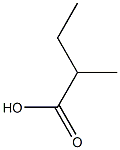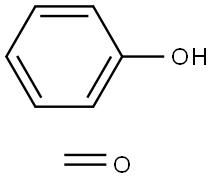Poly(styrene-co-acrylonitrile)
- CAS NO.:9003-54-7
- Empirical Formula: C33H33N3X2
- Molecular Weight: 471.64
- MDL number: MFCD00134009
- SAFETY DATA SHEET (SDS)
- Update Date: 2024-12-18 14:07:02

What is Poly(styrene-co-acrylonitrile)?
Chemical properties
clear white pellets
The Uses of Poly(styrene-co-acrylonitrile)
A large quantity of this copolymer is extruded as a thin tubing which is biaxally stretched by inflating with air at moderate temperatures before slitting. This product, called Saran Wrap, has a tensile strength of 15,000 psi (103 MPa). Since it has a high degree of transparency to light and a high coefficient of static friction (0.95) it is widely used for the protection of foods in the household. It has a low permeability value for gases such as oxygen and nitrogen.
Poly(vinylidene chloride-co-acrylonitrile) is widely used as a latex coating for cellophane, polyethylene and paper. Since this copolymer is soluble in organic solvents, it is also used as a solution coating. The resistance to vapor permeability and the ease of printing on polyethylene and cellophane is increased by coating with this vinylidene chloride copolymer.
The tensile strength of both film and fiber is increased tremendously by cold drawing 400–500 per cent. Thus, tensile strengths as high as 40,000 psi (276 MPa) in the direction of draw have been obtained by cold drawing.
Production Methods
POLYVINYLIDENE CHLORIDE.. A stereoregular, thermoplastic polymer is produced by the free-radical chain polymerization of vinylidene chloride (H2C=CCl2) using suspension or emulsion techniques. The monomer has a bp of 31.6 °C and was first synthesized in 1838 by Regnault, who dehydrochlorinated 1,1,2-trichloroethane which he obtained by the chlorination of ethylene. The copolymer product has been produced under various names, including Saran. Since this monomer readily forms an explosive peroxide, it must be kept under a nitrogen atmosphere at ?10 °C in the absence of sunlight.
The copolymers were patented by Wiley, Scott, and Seymour in the early 1940s. A typical formulation for emulsion copolymerization contains vinylidene (85 g), vinyl chloride (15 g), methylhydroxypropylcellulose (0.05 g), lauroyl peroxide (0.3 g) and water (200 g). More than 95 per cent of these monomers are converted to copolymer when this aqueous suspension is agitated in an oxygen-free atmosphere for 40 hrs at 60 °C. The glass transition temperature of the homopolymer is ?17 °C. It has a specific gravity of 1.875 and a solubility parameter of 9.8.
Definition
ChEBI: Styrene-acrylonitrile copolymer is a polymer.
Safety Profile
Moderately to hghly toxic by ingestion. Questionable carcinogenSee also NITRILES. When heated to decomposition it emits toxic fumes of NOX, and CN-.
Properties of Poly(styrene-co-acrylonitrile)
| Density | 1.08 g/mL at 25 °C(lit.) |
| form | powder |
| color | Clear white |
| CAS DataBase Reference | 9003-54-7 |
| IARC | 3 (Vol. 19, Sup .7) 1987 |
| EPA Substance Registry System | Acrylonitrile styrene polymer (9003-54-7) |
Safety information for Poly(styrene-co-acrylonitrile)
Computed Descriptors for Poly(styrene-co-acrylonitrile)
New Products
Tert-butyl bis(2-chloroethyl)carbamate (S)-3-Aminobutanenitrile hydrochloride N-Boc-D-alaninol N-BOC-D/L-ALANINOL N-octanoyl benzotriazole 4-Hydrazinobenzoic acid 3,4-Dibenzyloxybenzaldehyde 1,1’-CARBONYLDIIMIDAZOLE R-2-BENZYLOXY PROPIONIC ACID 1,1’-CARBONYLDI (1,2-4 TRIAZOLE) 4-HYDROXY BENZYL ALCOHOL 3-NITRO-2-METHYL ANILINE (2-Hydroxyphenyl)acetonitrile 4-Bromopyrazole 5-BROMO-2CYANO PYRIDINE 5,6-Dimethoxyindanone 5-broMo-2-chloro-N-cyclopentylpyriMidin-4-aMine 4-methoxy-3,5-dinitropyridine 2-(Cyanocyclohexyl)acetic acid 2-aminopropyl benzoate hydrochloride 1-(4-(aminomethyl)benzyl)urea hydrochloride tert-butyl 4- (ureidomethyl)benzylcarbamate diethyl 2-(2-((tertbutoxycarbonyl)amino) ethyl)malonate Ethyl-2-chloro((4-methoxyphenyl)hydrazono)acetateRelated products of tetrahydrofuran








You may like
-
 POLY(STYRENE-CO-ACRYLONITRILE) CAS 9003-54-7View Details
POLY(STYRENE-CO-ACRYLONITRILE) CAS 9003-54-7View Details
9003-54-7 -
 Poly(styrene-co-acrylonitrile) CAS 9003-54-7View Details
Poly(styrene-co-acrylonitrile) CAS 9003-54-7View Details
9003-54-7 -
 Poly(styrene-co-acrylonitrile) CAS 9003-54-7View Details
Poly(styrene-co-acrylonitrile) CAS 9003-54-7View Details
9003-54-7 -
 55441-95-7 99%View Details
55441-95-7 99%View Details
55441-95-7 -
 N-Vinylformamide 99%View Details
N-Vinylformamide 99%View Details
13162-05-5 -
 Chloro Uracil 1820-81-1 99%View Details
Chloro Uracil 1820-81-1 99%View Details
1820-81-1 -
 2-ethyl-6-methyl-3-hydroxypyridine succinate 99%View Details
2-ethyl-6-methyl-3-hydroxypyridine succinate 99%View Details
127464-43-1 -
 2-ETHYLPYRIDINE 100-71-0 99%View Details
2-ETHYLPYRIDINE 100-71-0 99%View Details
100-71-0